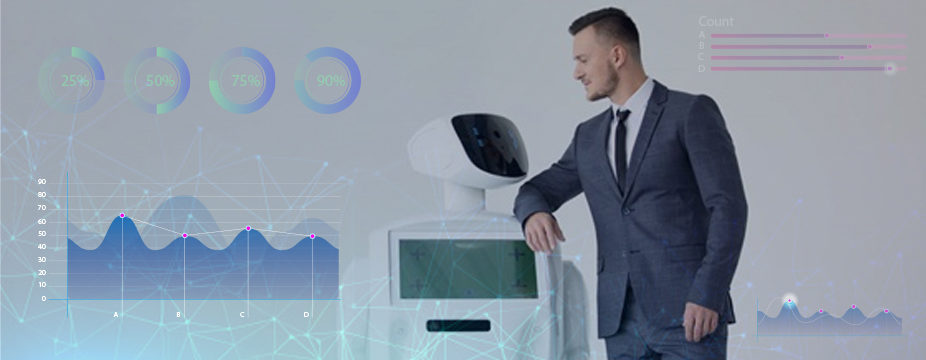|
Getting your Trinity Audio player ready...
|
Data-driven AI is promising the future of retail by fulfilling the dream of retailers to become more customer-centric. As the retail sector is at the core of digital transformation, the entire segment is trying to cope with changing customer habits. The lack of customer insights has made industry giants either close their firms or transform into a web-based supply chain.
With evolving technologies, the clicks and motor segments adopting new tech applications like beacon technology, smart store convenience, virtual mirrors, robot assistance, etc. to build a revenue-driven outlet. This application of AI technologies has been revolutionizing the perspective of the retail industry by providing new roots for effortless and cost-effective store convenience. The data is recorded from the store entrance to exit in various formats and stored in datasets. Using big data analytical tools these datasets are further analyzed to extract the required actionable insights to create a more personalized customer experience.
According to Mordor Intelligence, the predicted growth of retail is increasing by 35% by 2023. The Global Market insights stated that the usage of AI in retail will raise USD 8 billion by 2024. The changes are occurring at a rapid phase as more applications of Deep Learning, Machine Learning, prescriptive analytics, and predictive analytics are used in retail.
Emerging trends of AI in Retail:
Customer data is playing a vital role in every industry. In retail, it is changing the dynamics of retail outlets by adopting and implementing new technologies that not only drive customers’ data but automatically correct suggestions and recommendations for every customer, based on automated data-driven insights. Integrating with AI, machine learning, NLP, and deep learning networks, retailers are tracking real-time customer data to trace their perceptions, expectations, and shopping experience in their outlets. The top 4 technologies of AI using data as a key tool to retain their customers are –
1. Beacon technology:
Beacon technology uses low-energy Bluetooth technology. It provides instant information to the customers who are fleeting by the store. By providing up-to-date information regarding seasonal discounts, cash-backs, and gift-away coupons, retailers can drive more traffic to the store. Hence it increases the chance of conversion by 95%.
Examples of retail giants using this technology are Google’s Eddystone, Apple’s iBeacon – which is installed in 254 stores all over the world, and Starbucks using the same beacon technology for Bluetooth-enabled payment assistance in their outlets.
2. Robot assistant:
Robot assistants acclimatized in today’s retail outlet as day-to-day operations in a retail outlet are considered a hurdle for retailers until robots were introduced into this segment. The human’s work function may be misleading sometimes. But the trained and purposely designed robots cannot afford that. These robots not only operate functions related to retailers they also benefit customers by providing information regarding product location, product pricing, instant discount coupons, etc. Robot assistants in a store provide manifesting shopping experience that further increases the customer-centricity and growth of the retailer. Ex: Walmart
3. Smart mirror technology:
It is observed that 70% of consumers who use trial rooms in an outlet will end up buying something else or leaving the store without any purchase. The use of smart mirrors can increase the number of footfalls by decreasing the customer attrition rate.
Smart mirror technology ( known as a magic mirror) is mainly used in fashion retail outlets. The mirror provides a virtual experience to the customers. It helps to check the product’s look without trying it which will change the culture of the trial room. Leading fashion industry giant Zara has been the foremost applicant. Even though it is a working prototype, it has helped Zara in driving growth and good returns. Zara changes its stock every two weeks. It is hard for a customer to refer back to a few styles which they liked and wanted to purchase in the future. So with this technology, customers can access the out-of-stock and upcoming stock virtually and check on their looks with computer vision-enabled AR mirrors.
4. Hybrid technology:
Amazon GO is a new face of retail. The store concept uses various technologies like computer vision, deep learning algorithms, sensor fusion, and data-driven radio frequency identification to track and trace their customers. This new-age technology is driving retail businesses as it fulfills every aspect of being customer-centric, customer store convenience, digital-enabled transactions that eliminate traditional queue payment systems, etc.
Customers enter a store by scanning their Amazon Go QR code on mobile, pick the products that they like, and can leave the store. After 2 to 5 minutes they get a message of the payment bill for the items purchased and customers can pay through card/app payment methods. The computer vision-enabled AI systems click images to track and trace every moment of every customer entering the store. The deep learning networks process those images to identify items picked by a particular customer and sensors identify the final purchases made by individual customers.
Data-driven AI helps in harnessing data collected from customers. Deriving meaningful intelligence insights, from the collected massive amounts of datasets, helps companies to create a personalized shopping experience via- intelligent in-store bots, highly-structured webshops, and online chatbots. The application of AI in daily retail operations is changing the phase of the retail industry. AI being integrated with computer vision, big data analytics, and deep learning algorithms, is providing advanced applications to retailers to address their customer wants.
If you need any help with idea validation, proof-of-concept, Data Science consulting, large-scale AI implementation, Big Data Engineering, or a creative solution for your retail platform. You are at the right place.
Talk to our experts

